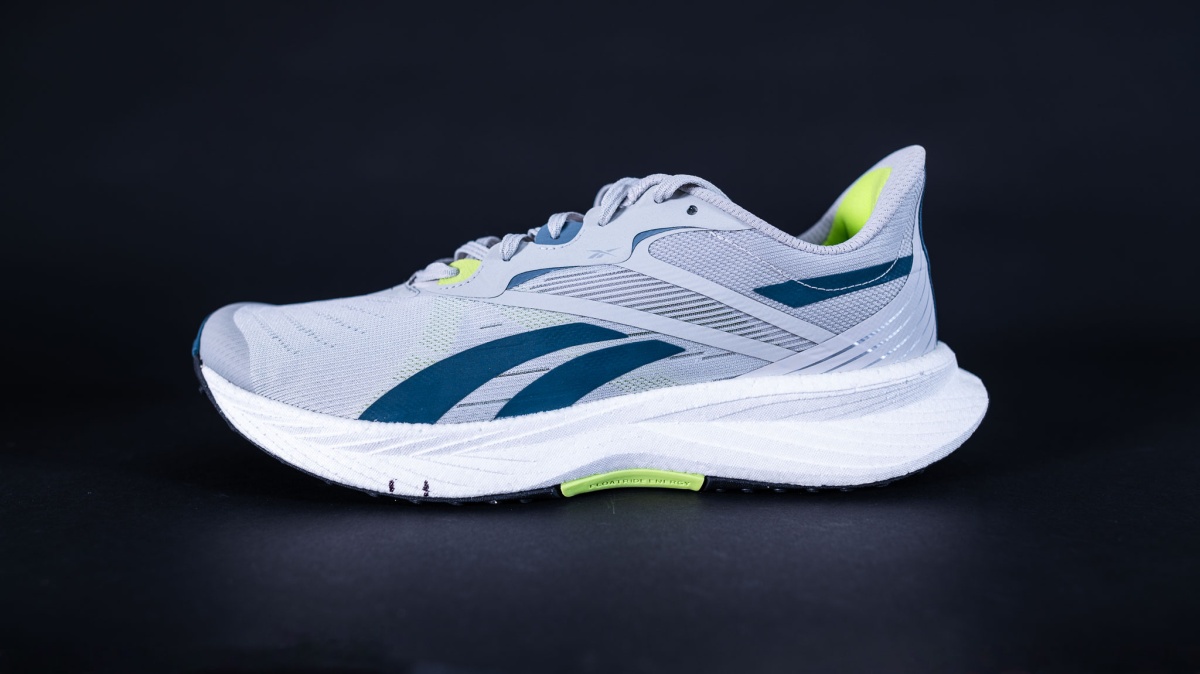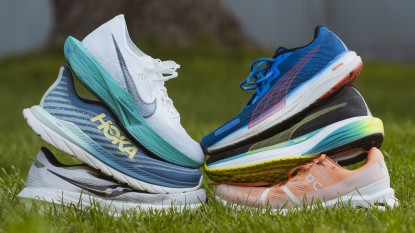Our Verdict
Our Analysis and Test Results
Budget shoes rarely do everything well, and the Reebok Floatride Energy 5 is no exception to that rule. It's solid at a lot of things but doesn't stand out in anything except price. That does make it a decent all-arounder, with a few caveats.
Landing Comfort
The Floatride Energy 5 feels old-school. It “only” has 32 mm of stack height under the heel and 23 mm under the forefoot, which is low by today's standards. Reebok managed to keep the cushioning solid with the Floatride Energy foam, though. It's enough to insulate the legs and keep us from bottoming out the cushioning. It is pretty firm, though, which means we didn't love using it for recovery days when our legs were beat up.
Reebok added a midfoot plate to the shoe for torsional stability. We found that the X-plate definitely reduced midfoot comfort. Mid/forefoot landings at pace felt harsh, but slower running when we were farther back on our feet had better transitions. This is one of the few shoes we've tested recently that took some breaking in. We experienced significant discomfort around the area of the X-plate, particularly on the outside of our midfoot. After about 30 miles, the shoe was much more comfortable, although still a little tight around the midfoot.
Responsiveness
This shoe has a mild rocker, which helps when you try to pick up the pace. It feels fine for strides and can handle threshold workouts, although it is not the shoe we could choose for quality sessions. The foam lacks the energy return of faster shoes. That isn't to say it's bad; the shoe's responsiveness is solidly decent.
Stability
The X-plate that caused some discomfort does help to provide some lateral stability. This is a neutral daily trainer that errs on the side of stability.
Upper Comfort
The upper and overall fit of the Floatride Energy 5 runs narrow. That's our biggest complaint about the shoe, particularly around the midfoot area. We didn't experience any hotspots or rubbing, but we did notice that the upper did not breathe well on warm days. Runners with wider feet will not do well with this shoe, and we would advise you to look elsewhere if you know you need a higher-volume toe box.
Weight
For a daily trainer, the measured weight of 9.73 ounces per shoe (size US 10.5) isn't bad, placing it spot on average for the group. We think a lightweight upper could help reduce some weight, but the shoe doesn't feel unreasonably heavy. We don't have any major complaints here.
Traction
Thanks to a fairly aggressive tread pattern, traction is solid, and we experienced no issues on various surfaces.
Should You Buy the Reebok Floatride Energy 5?
For a simple, affordable daily trainer, the Floatride Energy 5 is solid. A jack of all trades, master of none, it can do a bit of everything but doesn't excel at anything. If you have narrower feet and like a firmer ride, it might work well for you.
What Other Running Shoes Should You Consider?
The Puma Velocity Nitro 3 is one of our favorite budget-friendly shoes. It packs better all-around performance at a decent price. We'd recommend it over the Floatride Energy 5. The New Balance FuelCell Propel v5 is a similarly affordable trainer that performs well across a number of metrics.










